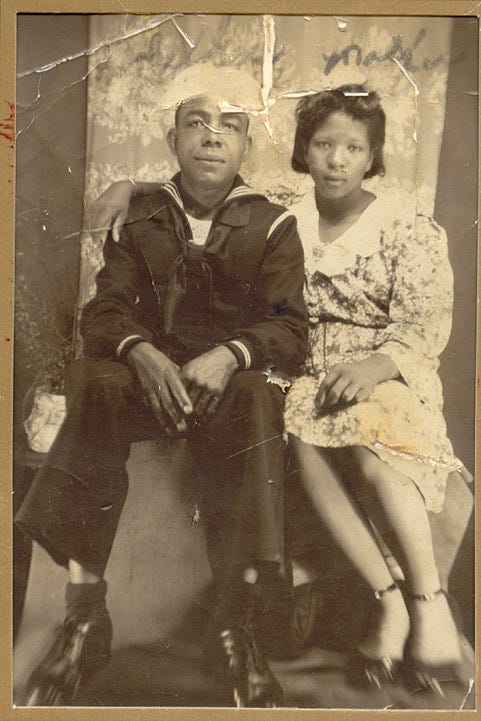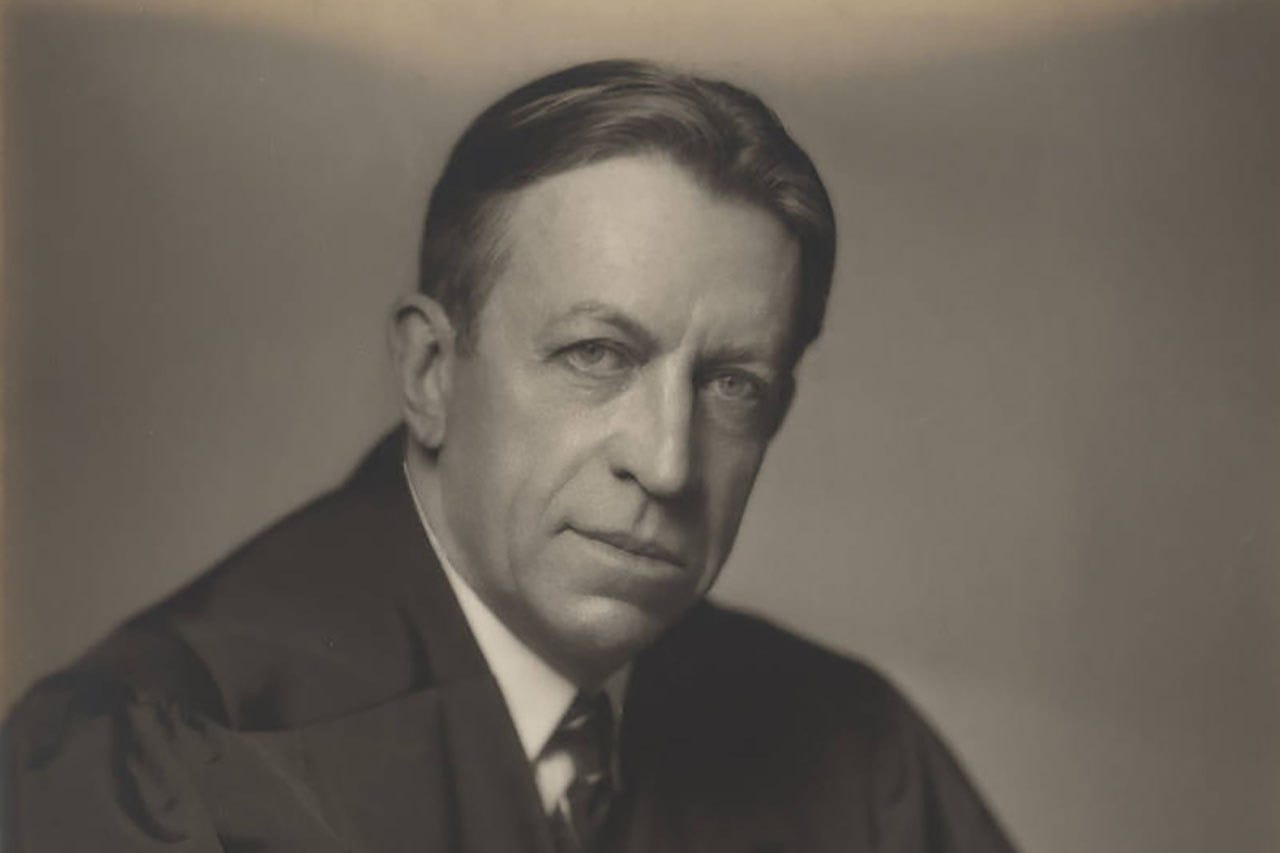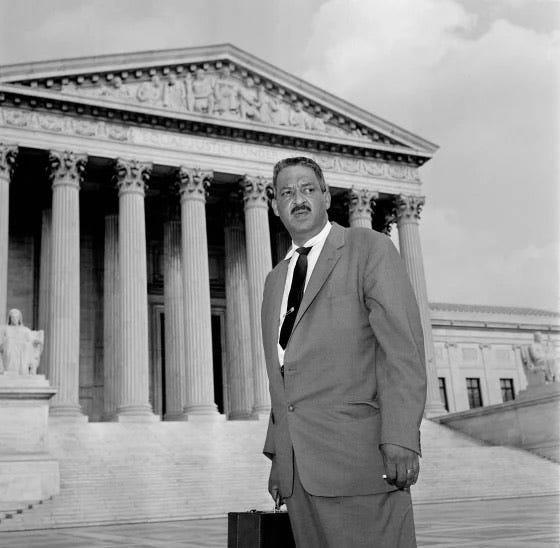I entered my first college class at 8:00 AM on a Monday morning as a history major. I left that class a political science major. Dr. Tinsley E. Yarbrough, who taught Political Science 101, was so dynamic, articulate, and charismatic that just one 90-minute class persuaded me to switch majors.
So, imagine my reaction many years later when I stumbled across a book written by Dr. Yarbrough titled A Passion for Justice: J. Waties Waring and Civil Rights. As I thumbed through the book, I learned that Waties Waring, a native of Charleston, SC, became a federal district court judge in his hometown. Like most white Charlestonians in that era, Waring was a committed segregationist before something, or someone, persuaded him that segregation was unjust and unconstitutional.
Many of Waring's friends and neighbors were convinced that someone was Waring's second wife, Elizabeth, a twice-divorced woman from New York City whom Waring married in 1945 shortly after divorcing his first wife. Waring insisted that his new wife simply opened his eyes to the injustice African Americans were enduring in the South during the Jim Crow era. His former friends and associates claimed that Waring changed his views on civil rights only after Charlestonians ostracized him and Elizabeth because he divorced his first wife.
Dr. Yarbrough mentions Waring's home at 61 Meeting St. several times in his book, so the next time I found myself in Charleston, I took a short stroll down Meeting St. As I walked by Waring’s former home, the front door opened, and a man exited the house while putting on his luxurious overcoat.
I stopped him and said, "I'm reading a book that mentions your home several times."
"Oh, you must be reading about Waties Waring," he replied.
"Yes, that's right," I said as his wife approached the door. He told his wife what I said. She stuck a finger in my face and declared, "Well, let me tell you the real story about that man."
The owners of 61 Meeting St. were running late for their evening out. They excused themselves. The conversation ended there. Yet, I have often wondered what the woman would have said about Waties Waring. Would she see Waring as a hero of the Civil Rights movement? Or would she disapprove of the new Judicial Center at 83 Meeting St., less than two blocks from her home, being named for J. Waties Waring?
There were many heroes in the struggle to desegregate schools in the United States. Some were individuals. Some were organizations. They include the NAACP's Legal Defense Fund, its chief attorney Thurgood Marshall, Supreme Court Chief Justice Earl Warren, and the many families who put their jobs, homes, and physical safety on the line by agreeing to be plaintiffs in the lawsuits that brought down Jim Crow. One of those families was the Browns from Topeka, Kansas. Another was Harry Briggs Sr., his wife, and their ten-year-old son, Harry Briggs, Jr., from Summerton, SC. These families understood the risks they were taking. Another unsung hero of the story is Judge Waties Waring, who sacrificed his own family and friends because he had a “passion for justice.”
Most Americans are familiar with the case of Brown v. Board of Education. They know that case overturned the “separate but equal” doctrine by declaring segregated schools unconstitutional. Yet I doubt most Americans realize that the Brown case was one of five cases the court decided in May of 1954 that outlawed segregated schools. The Supreme Court combined the Brown case with similar cases from South Carolina, Delaware, Virginia, and the District of Columbia. All five raised the same constitutional question: Did the segregation of public education based solely on race violate the Equal Protection Clause of the Fourteenth Amendment?
The South Carolina case, Briggs v. Elliott, was one of the five Brown cases. There was no doubt that Black schools were not equal to white schools in South Carolina during the Jim Crow Era. In 1950, Clarendon County, where the Briggs family lived, spent 75% of county money on white schools. All-Black Liberty Hill Elementary School and Scott's Branch High School lacked running water and indoor toilets. African American families in Summerton had pushed for better schools for years. They often supplied sweat equity when county officials denied them needed funds for basic services. Parents repaired broken windows. They raised money to purchase a bus and fixed the bus themselves when it broke down, which it did frequently. Many students walked over 8 miles to school. Others gave up.
Frustrated parents first approached the county school superintendent, R.W. Elliott, about purchasing and maintaining a bus for Black students. Elliott allegedly responded with profanity and racial epithets, prompting the parents to drop their "bus only" demand. Instead, they demanded an end to segregated schools.
Led by the Rev. J.A. de Laine, an influential African American preacher and teacher, the parents contacted the NAACP Legal Defense Fund. The NAACP was initially concerned that the plaintiff families would not have the courage to stay the course. Jobs were at risk from white employers. Violence against Black families was possible. One of those families was the Briggs family. Ten-year-old Harry Briggs, Jr. became Marshall’s client and the lead plaintiff in Briggs v. Elliott. Both of Harry Briggs's parents lost their jobs, and the family lost its house when news of their participation in the lawsuit became public. Rev. de Laine escaped into North Carolina after his life was threatened.

Prior to these cases, the NAACP’s legal strategy had been to attack the blatant inequality of schools in the South, not segregation per se. Judge Waring told Thurgood Marshall it was time to attack segregation head on. He encouraged a skeptical Marshall to ask the court to end segregation instead of seeking greater equality in the distribution of educational resources to white and Black schools. Marshall agreed.
On May 24, 1951, Dr. Kenneth Clark and his wife Mamie Phipps Clark, African American psychology professors from City College of New York, visited the small, impoverished community of Summerton, SC, at Marshall’s request. The Clarks conducted experiments with African American children attending racially segregated schools in Summerton. The Clarks showed the children a brown doll and a white doll and asked the children which doll was "nice" and which was "bad,” which one they liked and which one they did not like. 10 of the 16 children preferred the white doll over the Black doll.
Using this experiment and others he conducted in Arkansas and Massachusetts, Clark concluded that segregated schools instilled a sense of inferiority in African American children. Marshall would argue the obvious truth that South Carolina schools were not equal. This was necessary, of course. However, he decided to use the Clarks’ experiments to show that segregation harmed Black children whether or not the schools were “equal.”
In court, South Carolina conceded schools were not equal in Clarendon County. They asked for time to equalize the schools, citing a push by the state to boost public school spending. In a 2-1 decision, the Federal District Court in South Carolina ruled the county should have more time to equalize facilities without ending segregation.
Despite the setback, the plaintiffs were encouraged by Judge Waring's forceful dissent. Waring found the Clarks’ evidence persuasive. In his dissent, he wrote that "segregation is per se unequal," a phrase Chief Justice Earl Warren changed to "segregation is inherently unequal" in the Supreme Court's unanimous ruling in Brown v. Board of Education. The Supreme Court also cited the Clarks’ experiments, which was the first time the court cited social science in a majority opinion.
Judge Waring, a native of Charleston, previously seen as a pillar of Charleston's white establishment, was ostracized by Charleston society. Some say this was because of his stand in favor of civil rights, others because he divorced his first wife and married a divorced woman from New York. `If the couple I met at 61 Meeting St. had not been running late that day, perhaps I’d have learned “the real reason” but I doubt it. Whatever the cause, the Warings left Charleston for New York soon after the Brown decision was announced.
Brown v. Board of Ed changed public schools in the Carolinas. The ruling was issued in 1954; however, the change did not happen fast. I was born in Greensboro, NC in 1953. Yet I did not attend an integrated public school until my senior year in high school. School systems throughout the South resisted desegregation. One Virginia district closed its public schools, a step known as massive resistance. The Brown decision is celebrated as a milestone in the fight for civil rights, but the real fight is where it's always been – in the hearts and minds of all of us.
Questions to consider:
Why did it take so long for integrated schools to become the law of the land? What is happening today? Are schools becoming re-segregated? Will vouchers help or hurt education in America?
Further Reading:
A Passion for Justice: J Waites Waring and Civil Rights
Dawn of Desegregation: J.A. de Laine and Briggs v Elliott
NPS website: Briggs v Elliott - Brown v Board of Education
Teachers Lounge:
For a rare glimpse into the “behind the scenes” thinking of Supreme Court Justices. Check out these notes on Brown. Ask students can consider the associates justices opinions in 1954 with the legacy of the Brown decision today.





I don't know if there is an easy answer to why it took so long, but in Brown II in 1955, the court attempted to clarify the rather vague language in Brown I. But part of that clarification was the mandate that desegregation be accomplished "with all deliberate speed" which left the door open for some serious foot dragging.
At the end of it all, however, IMHO, is the cultural stratification so ingrained in American thinking (not just the South though it was most obvious there) that it could not be overcome on any kind of real-time schedule, People who were born and raised with this sense of superiority could not imagine any other way of life.